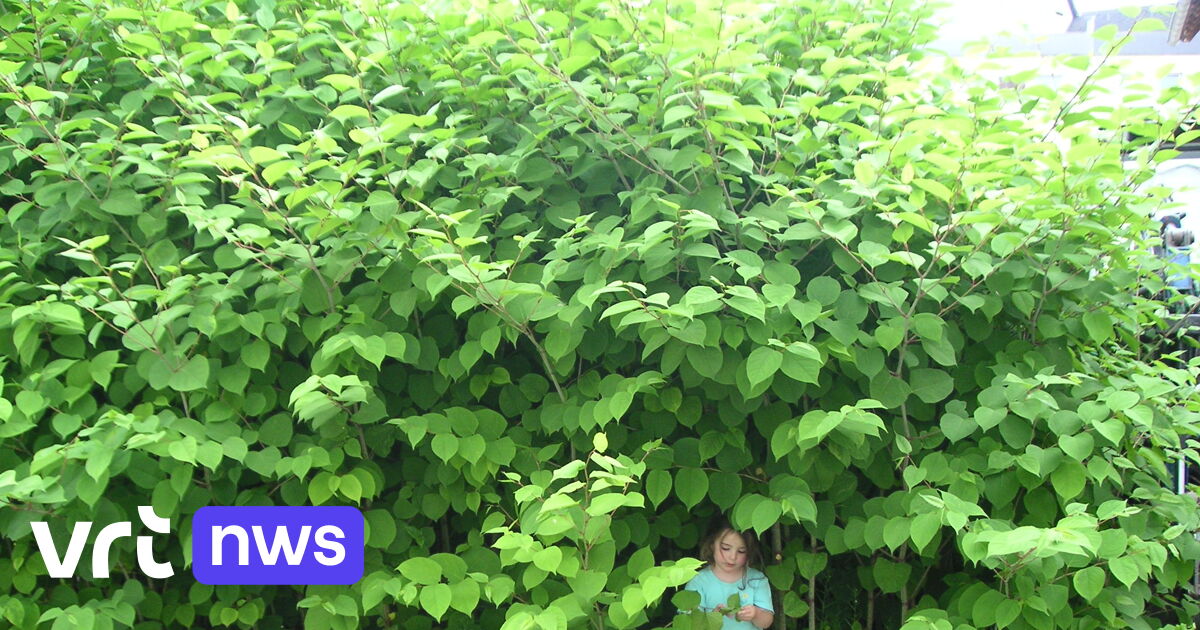Japanese knotweed is an annual plant with sturdy, hollow stems dotted with red spots and resembling bamboo. In autumn the plant dies and the stem, partially lignified, remains standing. The leaves are large and pointed at the tips, the plant forms a dense stand so that nothing else can grow beneath it.
In fertile areas the stems can grow up to 3 to 4 meters long, but often the plants are much smaller, especially where they grow through cracks in pavement or other hard materials, or where they are frequently mowed.
However, in many cases, another 3 meters must be added to the 3 meters: after all, knotweed’s extensive root system can reach that depth. These plants have an extensive network of rhizomes, where they store food, and can withstand temperatures down to -35 degrees. The root system can extend horizontally up to 7 meters from the plant, and its depth reaches 3 meters. There have been cases where plants have moved from one side of a 4-lane highway down the road and emerged on the other side.
This root system makes it very difficult to control Japanese knotweed by digging it up, and this is the main way the plant spreads. If soil containing rhizomes is dug up and used or thrown away elsewhere, the plant will appear there as well. And along rivers and streams, simply a patch of land with its rhizomes washed away and ended up elsewhere to create a new hearth.
Therefore, this plant is often found along rivers, and also along highways and railways, as well as in places where soil dumping has occurred, such as industrial areas.
The thick, dense colonies formed by Japanese knotweed crowd out all other plants and disrupt the ecosystem in which it grows. Because nothing grows beneath a dense canopy of foliage, knotweed can also worsen erosion.
Additionally, the invasive root system, coupled with its rapid growth, can cause serious damage to concrete foundations, embankments, roads and sidewalks, buildings and retaining walls. In the UK, some banks and other mortgage providers refuse to lend on properties where Japanese knotweed is found in the garden or in a neighbour’s garden. Since the publication of a report in 2012 stating that Japanese knotweed rarely causes serious damage to buildings and can be controlled, the number of loan rejections has decreased significantly.

“Coffee trailblazer. Analyst. General music geek. Bacon maven. Devoted organizer. Incurable internet ninja. Entrepreneur.”







